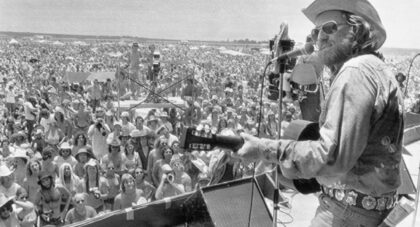Chros Brokaw's End of the Night’s lonesome nocturnal mood is mirrored perfectly by the cover art, created by legendary Hollywood artist Sandy Dvore. Dvore’s resume is, to say the least, outrageous. His work has graced the sleeves of albums by Frank Sinatra, Buffalo Springfield, Judy Garland, and countless more. An in demand visual artist, Sandy was responsible for a host of iconic TV title sequences—The Partridge Family, anyone . . .
Only the good shit. Aquarium Drunkard is powered by its patrons. Keep the servers humming and help us continue doing it by pledging your support.
To continue reading, become a member or log in.


